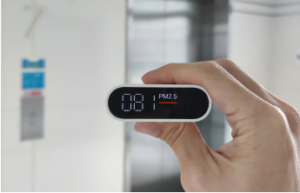2 IAQ Facts You Probably Don’t Want to Know
THE INSIDE SCOOP FROM THE HEALTY BUILDING CONFERENCE
 Well folks, it happened: After two years of rescheduling and postponement, I finally got to attend the International Society of Indoor Air Quality and Climate (ISIAQ) Healthy Building conference!
Well folks, it happened: After two years of rescheduling and postponement, I finally got to attend the International Society of Indoor Air Quality and Climate (ISIAQ) Healthy Building conference!
As you know from past newsletters, this conference is one of the highlights of my year. It’s my opportunity to learn the latest indoor air quality research, meet other experts in the field, network with peers, and discover cutting-edge technologies I can use to improve your buildings — and that’s exactly what I did.
This year’s conference was virtual, but I still learned a lot. I took 22 pages of handwritten notes on a legal pad while staring at my computer screen. I still have more programs in the archive to watch, too, but I already have two big, nasty takeaways I need to share with you.
1. Particles are a bigger problem than we thought — and they’re in your kitchen. Some of the most interesting presentations from this year’s conference focused on particles. I’ve written several articles about dust and particles for you in this newsletter already, but this new research really opened my eyes to what a critical issue PM 2.5 particles are for indoor air quality!
PM 2.5 articles are very small, less than 2.5 microns in width, but they can cause serious health problems when inhaled including eye irritation, sneezing, and upper respiratory issues. The presentations I watched ranged from research into the impact of PM 2.5s on caved-welling families in China to the effect they’re having on low-income Africans. Both of these populations cook indoors where they live and end up breathing higher levels of particulate matter that has a terrible effect on their health.
We’re not safe from this in developed countries, either! Other presentations focused on the impact of these particles in schools using natural gas for heat. I couldn’t believe the level of exposure they cited. After the conference, I pulled out my particle counter and ran it while Kaye and I cooked dinner on our gas stove. The PM 2.5 count rose to sky-high levels, even with the high-efficiency filters we use in our home!
With this new information, I’m being extra diligent about testing for particles in the commercial buildings I inspect. Not long ago, I ran just such a test when I was called in to help with a mold problem and found particle levels more than three times the recommended level. After investigating further, I discovered that an outside air intake was hooked up incorrectly and was pulling dirty air from the attic into the building’s second floor. Fortunately, we were able to fix the problem before the tenants developed health issues.
2. Even if you think your building is deep-cleaned, it probably isn’t. This came up at the conference when presenters shared research into the cleaning and custodial practices in schools and commercial buildings. When the researchers took micrographs (images showing microscopic particles), they found dirt, debris, and even mold lodged in the carpet of supposedly clean buildings! Even vacuuming with HEPA filters wasn’t enough. The amount of nastiness was staggering and eye-opening. Turn to Pg. 2 for more information on the research and how to clean properly.
As informative as the ISIAQ conference was, it wasn’t nearly as fun to attend online as it would have been in-person in Honolulu. Still, I managed to connect with a few peers through Facebook during the conference, including my friend Barbara Spark, a retired IAQ expert from the EPA. (You may remember her as the woman who made a public radio story on IAQ that was so excellent I used it as sales training.)
I’m looking forward to doing more of that and learning more not-so-fun facts for you at future conferences.

